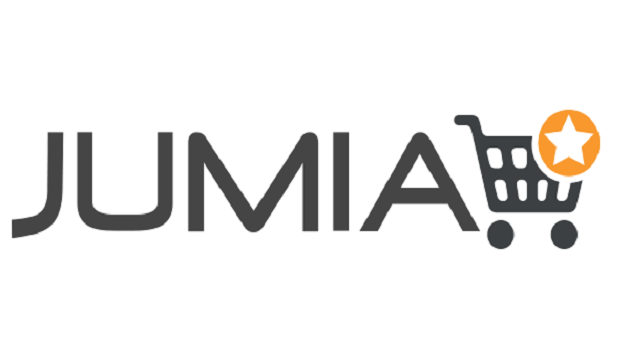E-Business
CellTrust Prepares NFC Provisioning APIs Using SecureSMS
CellTrust Corporation has announced that it is preparing patent-pending, NFC-provisioning APIs using SecureSMS, in anticipation of NFC technology rollout which will begin next year.
NFC (Near Field Communication) is a short-range wireless communication standard that bundles a contactless chip with a contactless reader inside the mobile device. With NFC technology, consumers can simply wave or tap their phone within a few inches of a reader to transfer information to their mobile phone or to complete a mobile payment or transaction.
Sean Moshir, chairman and CEO of CellTrust said: “CellTrust’s SecureSMS NFC solution will make it easy for carriers and banks to implement and integrate NFC. We believe the cost savings for mobile operators will be substantial, since they will be utilizing their existing SMSC infrastructure.”
CellTrust’s technology addresses the security gaps that exist with basic SMS, paving the way for NFC-enabled mobile devices to be securely used as an “electronic wallet.”
Designed to make life much easier for the end-user, provisioning NFC will require the carrier to send sensitive and confidential information to the mobile subscriber’s handset. While a few methods exist to provision NFC, CellTrust believes SMS is the optimal choice because it uses the mobile communications control channel, which is separate from voice and data and operates regardless of the voice or data being used. The control channel has high resiliency, low bandwidth requirements and was designed for carriers to send specific commands and instructions to the handset via SMS. It is important to note that standard SMS is not secure and can be spoofed. Provisioning NFC with CellTrust’s SecureSMS APIs addresses spoofing with a fully authenticated, government-grade, highly encrypted, tamper-proof process, which also enables message sizes up to 5,000 characters.
“At Juniper Research we forecast that 1 in 6 subscribers globally will have NFC phones by 2014. NFC is all about ease and convenience for users although the first question from users usually relates to security. This announcement by CellTrust is an important development to quell peoples’ security concerns and enable the rollout of NFC enabled mobile wallets,” said Howard Wilcox, Senior Analyst, Juniper Research.
NFC has the potential to be a significant, pervasive technology, but the lack of NFC chips in existing handsets and security concerns have held the industry back from wide-scale integration of mobile payments on NFC-equipped devices. CellTrust’s NFC solution could be a key driver in finally bringing mobile payments to NFC devices and unlocking the market potential for this technology.
CellTrust’s SecureSMS NFC APIs use Short Message Service Center (SMSC) and allow carriers to use their existing investment in SMS infrastructure while provisioning NFC, therefore a new NFC platform is not required. Carriers can easily integrate with the SecureSMS APIs and send secure commands and instructions to the handset to provision NFC with all types of transactions, including adding and deleting credit cards.
SecureSMS also gives mobile network operators an added level of security for OTA (Over-The-Air) configuration and provisioning of mobile devices compared to today’s standard SMS infrastructure, which is not tamper proof and can be spoofed.
E-Business
GenAI Adoption Among African workers Outpace Global Peers

Africa’s workforce is embracing artificial intelligence (AI) at a faster pace than global peers, but pressure is mounting for organisations to ramp up digital skills development as generative AI (GenAI) begins reshaping roles across industries.

This is according to PwC’s Global Workforce Hopes and Fears Survey 2025, which shows a continent ready for AI-enabled transformation, but facing a narrowing window to prepare, through skills development initiatives.
The survey, covering nearly 50 000 workers worldwide and 1 753 across South Africa, Algeria, Kenya, Morocco and Nigeria, finds that African employees are already integrating AI into daily operations.
Sixty-four percent of respondents in Africa used AI tools in the past year, compared to 54% globally, and the sentiment is overwhelmingly positive. While only 17% report using GenAI every day, confidence in its benefits is high: 76% believe GenAI improves work quality, and 72% expect AI-driven productivity gains within three years.
In SA, executives are even more bullish, as 91% say AI has already lifted both productivity and work quality — a signal that leadership is pushing harder toward AI-enabled ways of working, notes the survey.
However, this optimism is coupled with rising concern about future readiness. Only 35% of African workers believe their skills will still be relevant three years from now. With GenAI expected to affect nearly half of all job roles, PwC warns that the continent’s workforce risks falling behind unless organisations accelerate large-scale reskilling.
Despite the pressures, employees are not standing still. PwC notes that African workers outperform their global peers in proactive learning, recording 15% higher participation in skills-building and receiving 6% more support from managers. This indicates that both workers and immediate supervisors recognise the pace of AI adoption and are pushing to adapt.
PwC Africa people and organisation leader, Dr Dayalan Govender, says the moment calls for decisive leadership. Organisations, he argues, must integrate AI into workforce strategies, accelerate digital adoption, and expand upskilling programmes at scale.
“Africa’s workforce is optimistic and ready for change, but leaders must accelerate digital adoption and invest in future-ready skills to convert this optimism into sustainable growth,” he says.
Beyond the technology shift, the survey captures a workforce hungry for growth but constrained by financial pressure. Many employees are preparing to make career moves: 45% plan to request a raise, and another 45% aim for a promotion in the next year. Yet household financial stability remains strained, with only a third of respondents reporting any money left over for savings.
Still, Africa’s workplaces continue to show strong foundations of trust and purpose — elements PwC believes will be critical in navigating GenAI disruption. More than 55% of workers trust management, and two-thirds say their work feels meaningful, both above global averages.
With AI adoption rising and employees motivated to reinvent their careers, PwC warns that the coming years will determine whether Africa’s early optimism translates into long-term competitiveness as GenAI transforms the world of work.
The report calls for embedding AI into workforce strategies to bridge the gap between optimism and practical adoption, scaling upskilling initiatives to prepare for GenAI disruption, and fostering trust and psychological safety to retain talent and drive innovation.
“For employers, these findings are a stark reminder that they can and should do more to help workers understand, adopt, and embrace AI’s transformative power.
“Employers may need to pay special attention to entry-level workers, nearly a third of whom say they’re worried to a large or very large extent about AI’s impact on their future, even as they’re also curious (47%) and optimistic (38%) about its long-term societal effects,” notes the report.
E-Business
Nigeria Records Highest Weekly Cyberattacks in Africa — Report

Nigerian organisations are facing the highest volume of weekly cyberattacks in Africa, according to the newly released African Perspectives on Cyber Security Report 2025 by Check Point Software Technologies Ltd., a global leader in cybersecurity solutions.

The report revealed that Nigerian firms experience an average of 4,200 attacks per week, significantly higher than the continental average of 3,153 and 60 per cent above the global average of 1,963 attacks per organisation.
The findings highlight a sharp rise in attacks across Africa, driven largely by artificial intelligence-enabled threats.
Kingsley Oseghale, country manager for West Africa at Check Point, said attackers are increasingly using AI to automate phishing, impersonation, and cloud exploitation.
“AI has become part of the attack surface,” Oseghale said. “Attackers are using it to automate phishing and identity theft at scale. The only effective response is prevention-first security that combines visibility, governance, and AI protection.”
The report noted that cybercriminals are exploiting exposed identities and misconfigured systems to target critical sectors, including finance, energy, telecoms, and government.
Identity-led intrusions, AI-generated phishing campaigns, and multi-vector ransomware are on the rise.
Across the continent, Check Point identified key trends in different markets. Nigeria is experiencing business email compromise and cloud exploitation; South Africa faces rising ransomware, smishing, and botnet infections such as Vo1d and XorDDoS; Kenya has seen ransomware targeting critical energy infrastructure; and Morocco has experienced coordinated government and education-sector disruptions via DDoS and website defacement attacks.
The report highlights five major shifts shaping Africa’s cyber risk in 2025.
Traditional ransomware has evolved into data-leak extortion, AI-generated deception is widespread, and identity has emerged as the new security perimeter.
Weak cybersecurity, the report warned, can now affect international market access under regulations such as the EU’s NIS2 Directive, making digital resilience an economic necessity.
The study urged African businesses and governments to adopt prevention-first security strategies, including continuous risk assessment, regulatory readiness, and public-private collaboration.
Oseghale emphasised that, as AI reshapes operations, cybersecurity must shift from reaction to prediction.
“The real challenge is not adopting new technology but securing the trust that underpins it,” he said.
E-Business
Jumia’s Data Shows Nigerians Turning to Digital Retail to Navigate Inflation Pressures

As Black Friday 2025 unfolds across Nigeria, new insights from Jumia’s Q3 2025 financial results reveal that more Nigerians are relying on digital retail to navigate inflation and rising living costs.

The data points to a more deliberate, value-driven shopper, one using online platforms to stretch budgets, compare options quickly, and extract more value from each purchase.
Jumia reported a 30 percent year-on-year increase in physical goods orders, while Gross Merchandise Value for physical goods rose by 43 percent.
This stronger GMV growth highlights a clear behavioural shift: consumers are assembling higher-value baskets by combining essentials with premium or long-term household items. Online retail is serving as a tool for strategic planning, not just convenience.
According to Temidayo Ojo, Chief Executive Officer of Jumia Nigeria, Black Friday now plays a more critical economic role. “Households are using digital retail to defend purchasing power. They plan their lists, compare prices instantly, and rely on the reliability and convenience that e-commerce offers,” he said.
This year’s Black Friday trends show growing demand in categories that directly support daily living. Household essentials and FMCG products are seeing significant uptake as families stock up during price drops. Home and kitchen equipment is also experiencing stronger demand as shoppers prioritise practical, durable tools. Affordable fashion and beauty products are gaining momentum as discounts make them more accessible.
Consumer behaviour in the lead-up to the sales period further reinforces this shift. Jumia recorded a notable increase in “Add to Wishlist” and “Add to Cart” activity, signalling more planning and fewer impulse purchases. The gap between GMV and order growth indicates that customers are optimising baskets using bundles, vouchers, and promo combinations, behaviours uniquely suited to digital platforms.
With inflation intensifying the need for smarter buying, trust markers on Jumia, such as verified sellers, official brand stores, ratings, and clear return policies, are becoming more central to decision-making. Authenticity and durability now outweigh the appeal of the lowest price.
Jumia’s logistics footprint is making these benefits available nationwide. Its 30,000 sqm Isolo fulfilment centre, 480 pickup stations, and 62 logistics partners ensure that customers in secondary and peri-urban cities enjoy the same deals as those in major hubs, reducing travel burdens and adding financial value.
Overall, Jumia’s Q3 data and Black Friday trends show that Nigerians are turning to digital retail as a practical, strategic response to inflation, using e-commerce to manage budgets, preserve purchasing power, and make more informed buying decisions.

 Broadcasting3 days ago
Broadcasting3 days agoIt is Official, DStv Confirms Termination of 16 Major Channels

 General News2 days ago
General News2 days agoManufacturers Block More Ransomware, But Data Theft Surges – Sophos Report

 E-Financial3 days ago
E-Financial3 days agoSenate Considers Bill to Empower CBN to Regulate Fintech

 Telecom2 days ago
Telecom2 days agoMTN Nigeria Launches Y’ello Data Gifting Campaign as Digital Connectivity Shapes Festive Celebrations

 Broadcasting3 days ago
Broadcasting3 days agoParamount Africa Shuts Down after 20 Years

 Telecom3 days ago
Telecom3 days agoAfrica’s $1bn Biometric ID Rollout Raises Concerns Over Privacy and Exclusion

 Telecom3 days ago
Telecom3 days agoSenator Akpoti Tops Google Searches in Nigeria’s 2025 Year in Review

 News3 days ago
News3 days agoAfreximbank Taps Nigeria to Lead Africa’s Digital Trade Revolution





















